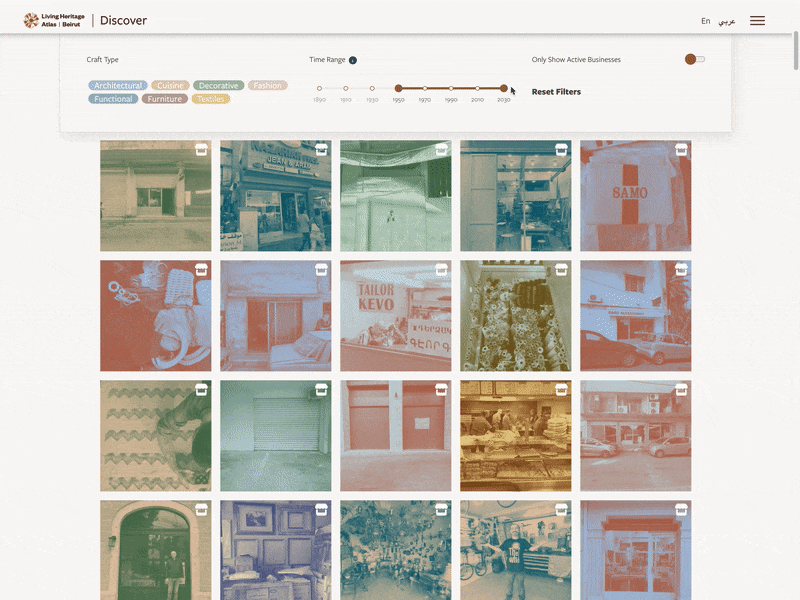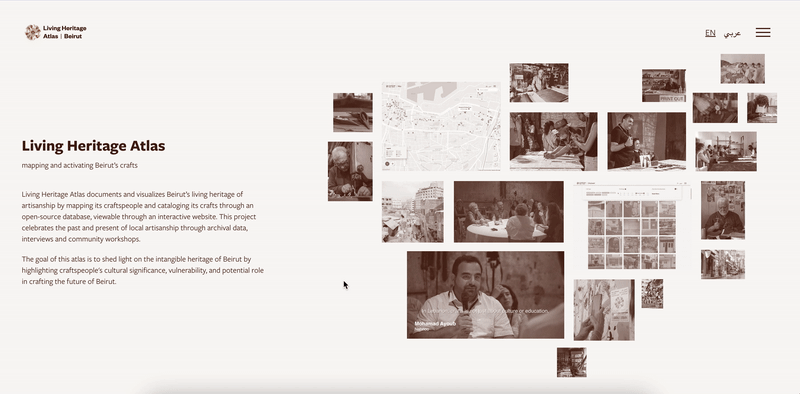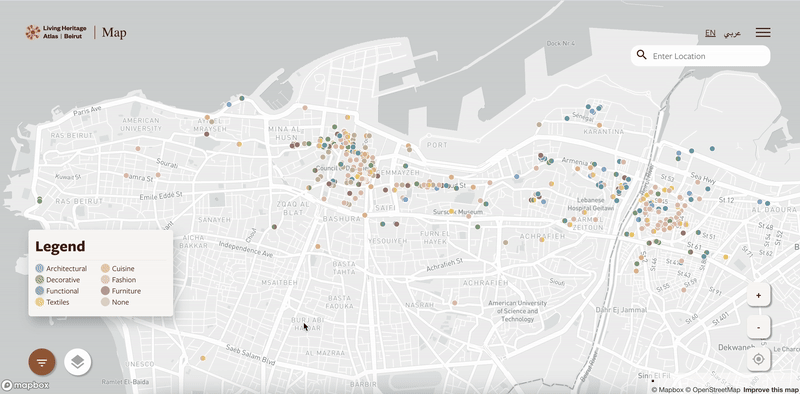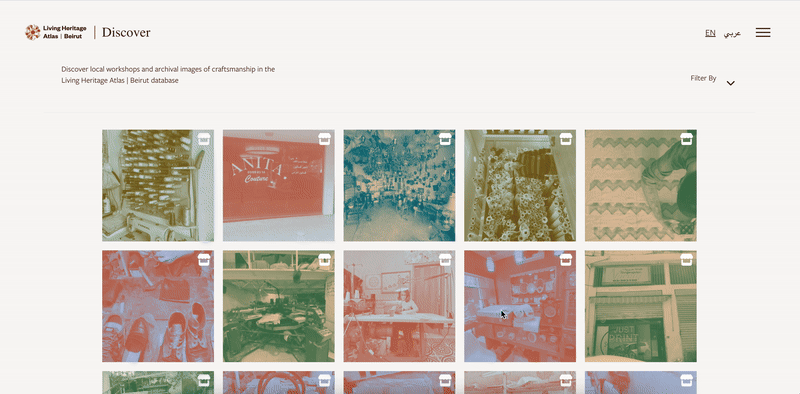Introduction
The Living Heritage Atlas is a digital archive of social memories and local practices gathered from crowdsourced stories of Beirut's craftspeople.
Features

Landing page
Designed and implemented this landing page for user's to quickly navigate to other parts of the website. It features thumbnails of select archival images and crafts people as well as screen caps of other pages of the application laid out in the shape of Beirut.
Historic map layers
Overlaid high-resolution maps of the city over the base map so users can understand Beirut over different years and contexts..


Interactive map
I created an interface where users can filtered archival images and crafts workshops by key words, craft types, associated year, etc. Users can view where craft workshops operate(d) or where archival images were taken as well as click on them to learn more and see simialr entries.
Discover feed
An alternative view to the map view where users can filter and view the archival images and craft workshops through an "Instagram"-like feed.

The website also featured a "Contributions" form which users can submit their own archival photographs or craft workshops.
Tech Stack
Next.js, React, Sass, Mapbox, Node, MongoDBMore
The project was also showcased at the 2023 Venice Architecture Biennale under "Rebuilding Beirut: Using Data to Co-Design a New Future."Contributions
I was the primary full-stack developer for this project and programmed the website for the entire duration of my 2022 summer. It was my first ever experience working in the backend, with databases and creating APIs. The platform features dynamic web pages, web forms and an interactive map visualization. Looking back and knowing what I know now, because it was my first every software development project and I was learning as I was going, there are a lot of things I could have improved.I worked under project manager Ashley Louie and lab director Sarah Williams.